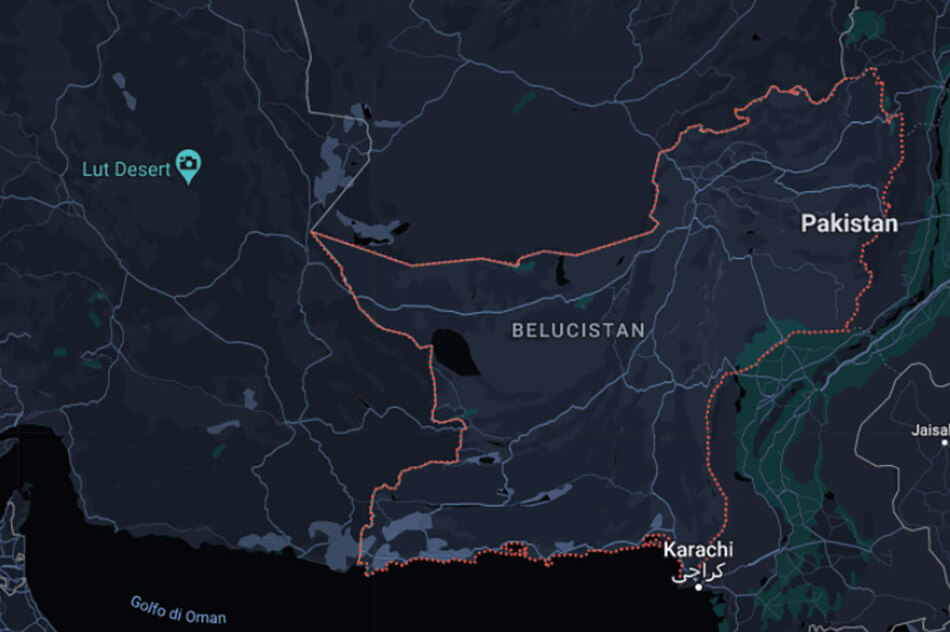di Beatrice Nicolini
The decision by Tehran to launch heavy aerial attacks against Pakistan on January 16, 2024, targeting alleged militant centers of the Jaish al-Adl group (formerly Jandallah) in Balochistan, marked an unprecedented escalation of tensions. Pakistan’s response on January 18, 2024, involving drone and missile attacks on Iranian territory, further exacerbated the situation, bringing bilateral relations to their lowest point in recent years and raising concerns about additional regional instability. This article explores the historical, ethnic, and geopolitical dimensions of the Baloch people and their role in the ongoing Iran-Pakistan crisis.
The recent military exchanges between Iran and Pakistan have underscored the deep-rooted tensions between the two nations. Tehran accuses Pakistan of allowing the Sunni separatist group Jaish al-Adl to operate freely in Balochistan, leading to attacks on Iranian authorities. The Baloch people, dispersed across Pakistan, southeastern Iran, Afghanistan, and other Gulf countries, have been caught in the crossfire, enduring displacement and human rights abuses. This article delves into the complex history and demographics of the Baloch people, shedding light on the multifaceted factors contributing to the current crisis.
The Baloch, a heterogeneous ethnic group, trace their roots back to the 12th-13th centuries when they migrated from the northeastern Iranian plateau and settled in present-day Balochistan. Linguistically, they belong to the Iranian branch of the Indo-European languages, with modern Baloch incorporating elements from Persian, Sindhi, Arabic, and other regional languages. The Baloch identify themselves as descendants of a mythical ancestor symbolizing the courage and dignity of their group.
The Baloch population, estimated at 8-9 million individuals, is dispersed primarily in Pakistan, southeastern Iran, Afghanistan, and various Gulf countries. In the Pakistani province of Balochistan, which constitutes 42% of the overall Balochistan region, diverse ethnic groups such as Pashtun, Baloch, Brahui, and Hindus coexist without a separate state. The movements of the Baloch, both local and international, have contributed to the gradual formation of their cultural identity.
The geopolitical importance of Balochistan became evident in 1872 when the British established a political border between Persian Balochistan and British Baluchistan (now part of Pakistan). The region’s division further intensified with the creation of Pakistan in 1947, making Balochistan its largest province. The port city of Gwadar, strategically located on the Pakistani Makran coast, gained significance for land and maritime communication routes between the Middle East and the Indian subcontinent.
The Balochistan region has witnessed persistent challenges, with the Pakistani state perceived as an occupying force by the Baloch people. Displacement of approximately 80,000 Pakistani soldiers in the 1970s and subsequent geopolitical developments, including failed negotiations with the United States for the use of Gwadar as a naval base, have shaped the region’s complex dynamics. The contemporary development of the Gwadar port under the Chinese ‘One Belt One Road Initiative - China/Pakistan Economic Corridor’ adds another layer to the ongoing challenges faced by the Baloch people.
As the Iran-Pakistan crisis unfolds, understanding the historical, ethnic, and geopolitical dimensions of the Baloch people becomes crucial. The diverse composition of the Baloch, their complex history, and the strategic significance of Balochistan contribute to the multifaceted challenges facing the region. In the midst of international indifference, the Baloch population continues to endure human rights abuses, emphasizing the need for diplomatic efforts to address the root causes of the ongoing crisis.
Beatrice Nicolini is Full Professor of History of Africa. She teaches History and Institutions of Africa; Religions, Conflicts and Slavery and Indian Ocean World at Università Cattolica del Sacro Cuore.


